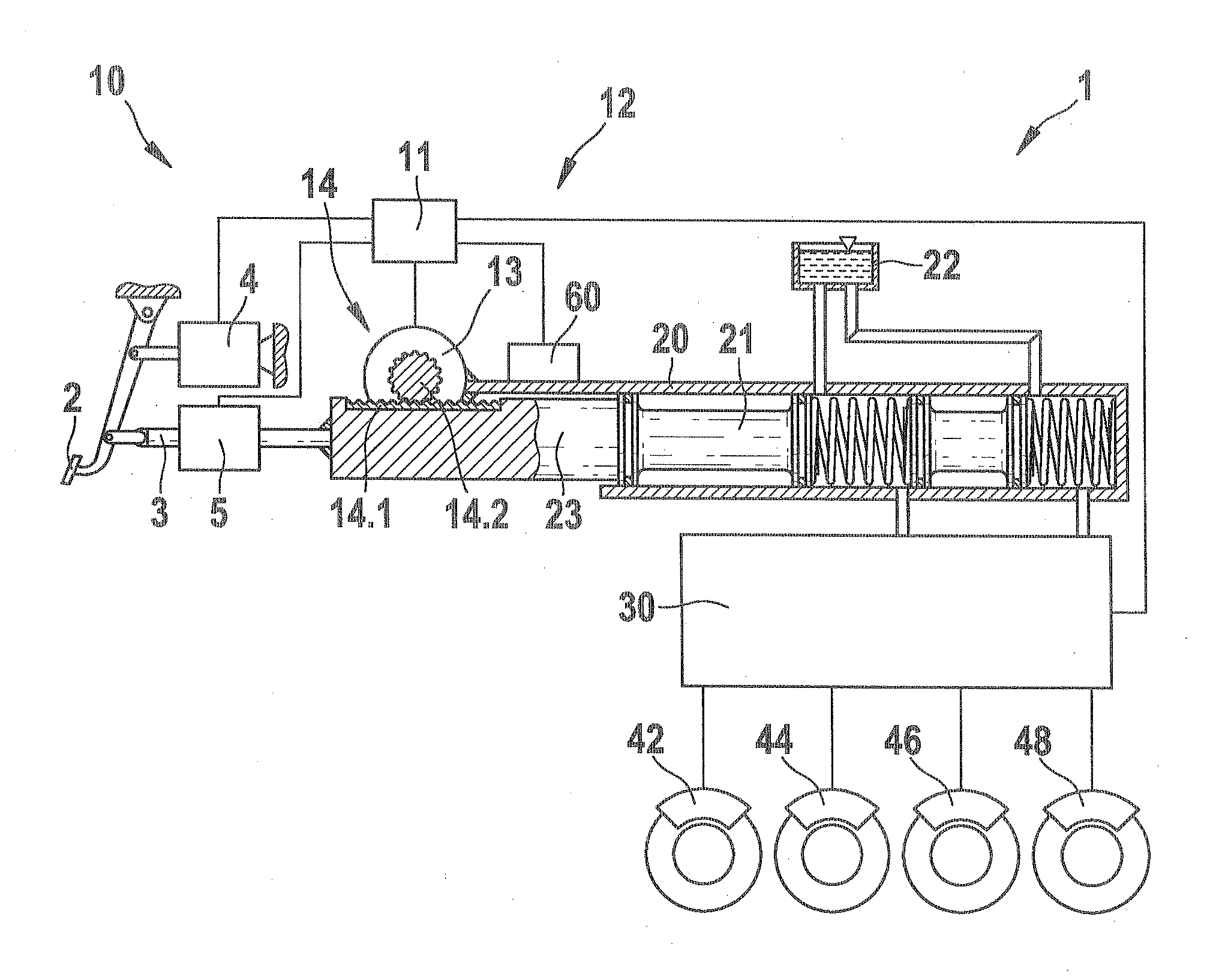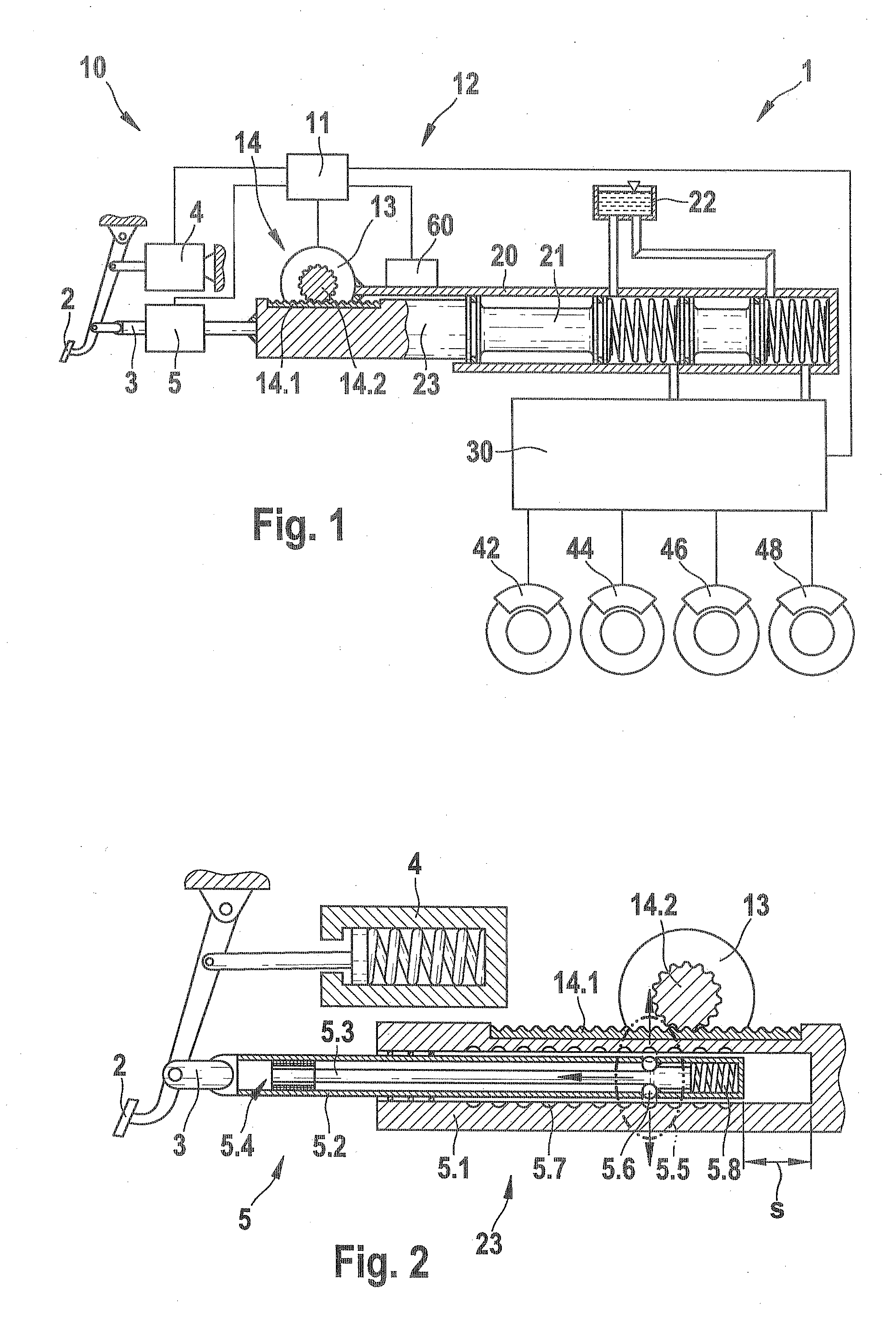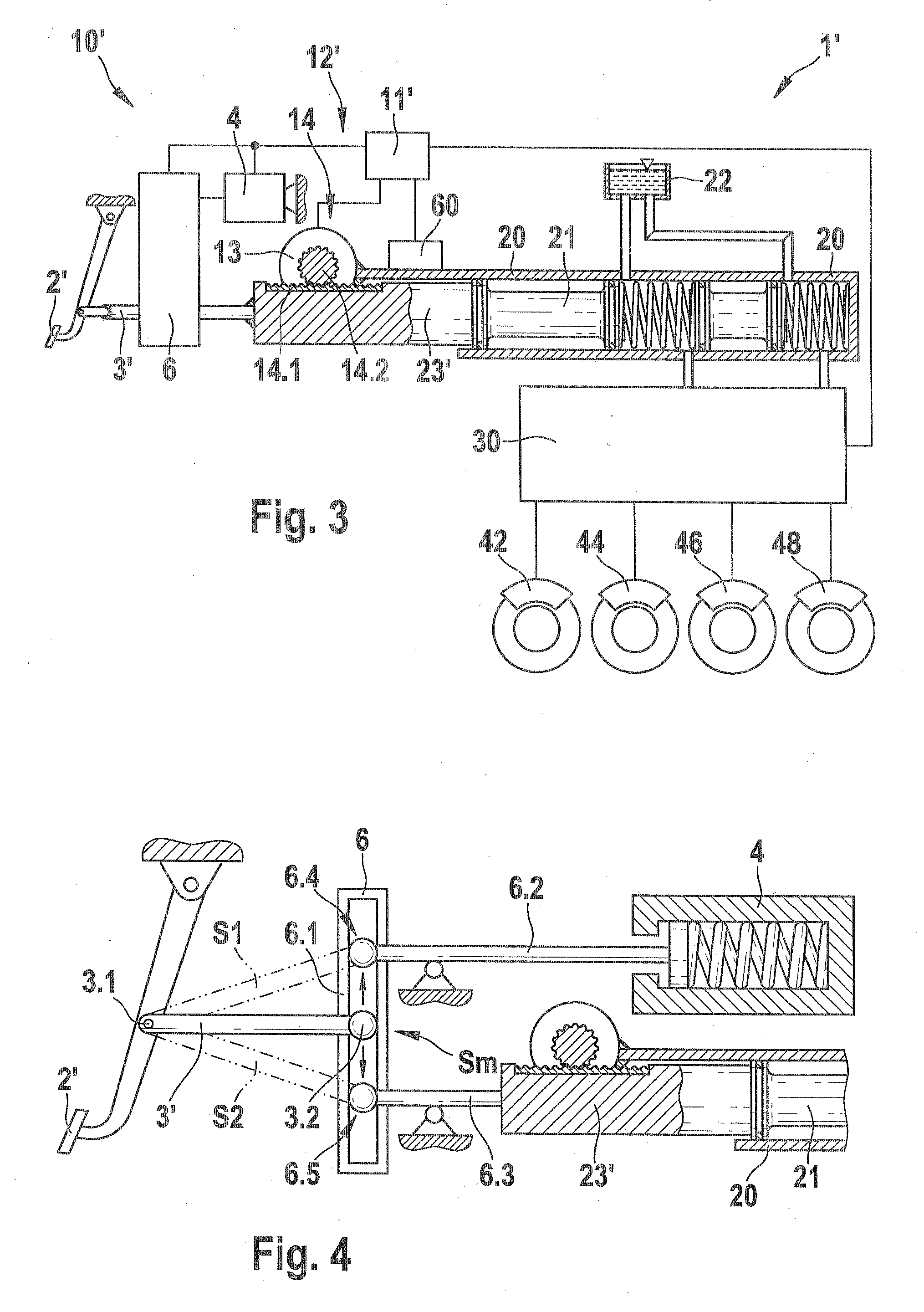Brake system for a vehicle
a technology for brake systems and vehicles, applied in braking systems, analogue processes for specific applications, instruments, etc., can solve problems such as inoperativeness
- Summary
- Abstract
- Description
- Claims
- Application Information
AI Technical Summary
Benefits of technology
Problems solved by technology
Method used
Image
Examples
Embodiment Construction
[0017]In the drawings, identical reference numerals identify elements and components that perform the same or analogous functions.
[0018]As can be seen from FIG. 1, a first embodiment of a brake system 1 according to the invention includes an actuator unit 10, which has a brake pedal 2; a pedal simulator 4; a first transmission device, embodied as a locking device 5; and a brake booster, which is embodied here as an electromechanical brake booster12; a master cylinder 20; a fluid control block 30; and a plurality of wheel brakes 42, 44, 46, 48, which are triggered at a predeterminable brake pressure via the master cylinder 20 and the fluid control block 30. The master cylinder 20 is embodied for example as a tandem master cylinder and communicates via suitable fluid connections with a fluid tank 22, which is used as a compensation tank for the brake fluid, and the downstream fluid block 30. The brake pedal 2 is connected to the pedal simulator 4 and to a coupling rod 3 that is embodi...
PUM
 Login to View More
Login to View More Abstract
Description
Claims
Application Information
 Login to View More
Login to View More - R&D
- Intellectual Property
- Life Sciences
- Materials
- Tech Scout
- Unparalleled Data Quality
- Higher Quality Content
- 60% Fewer Hallucinations
Browse by: Latest US Patents, China's latest patents, Technical Efficacy Thesaurus, Application Domain, Technology Topic, Popular Technical Reports.
© 2025 PatSnap. All rights reserved.Legal|Privacy policy|Modern Slavery Act Transparency Statement|Sitemap|About US| Contact US: help@patsnap.com



